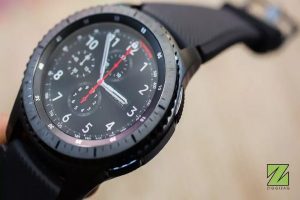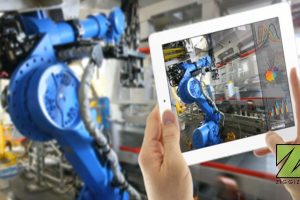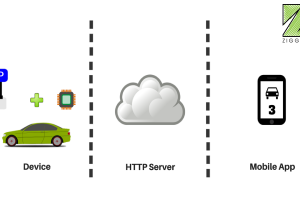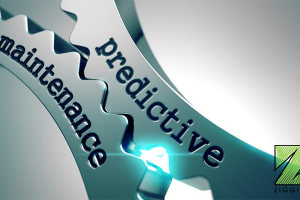Smart light bulbs have derived over years with the development of technology. These smart lighting bulbs are both useful for light and environment. These smart lighting products have soared in popularity in recent years. Light based systems have also derived over time. Such systems are equipped with infrared capabilities in smart phones, smart homes and offices. Such systems have ability to control lights via Wi-Fi, Bluetooth or other network.
Researchers have discovered that some smart light bulbs have been invented that are used to hack data and information over internet. Such light bulbs are used by hackers to infer users’ preferences and steal private data – even if the systems have been secured against attack via internet. Smart lighting systems offer many environmental and energy minimization benefits. Such light bulbs have also got the ability to customize settings to suit user’s mood. These bulbs can be connected to home or offices and can be controlled by user’s mobile devices. Such devices can be connected in homes or offices through communication hub. The users call bulbs attractive and at the same time helpful.
The cities are thick with street lights. Public lighting is the demand of citizens for lighting city’s highways, streets, parks and other common areas. With the world’s population set to bring 2.5 billion more people into cities by 2050, cities are under pressure to manage municipal lighting more efficiently. This pressure led the partners of the Paris Agreement to create the Global Lighting Challenge – a race to deploy 10 billion high-efficiency, high-quality and affordable lighting products as quickly as possible. Yes, these products include LED bulbs. It also calls on the use of sustainable and connected solutions that will offer cities far-reaching benefits than they’d achieve by just swapping out incandescent bulbs for LED ones.
The need for Automation
Different cities have different budgets and vendors for street lighting, raw materials and installation. Of the major streetlights currently installed, only a small number of them work. Thus, an automation solution must work with the current infrastructure without the major overhaul.
Benefits of IOT bulb beyond energy consumption
Connecting streetlights to the Internet of Things (IOT) offers cities incredible benefits. Currently, lighting accounts for 15% of the world’s electricity consumption – more than the electricity generated by all the nuclear power stations in the world. If the world’s cities universally adopt LED bulbs, this share can be reduced to 8%. Cities can take advantage of further reductions with smart LED streetlights that automatically dim when no pedestrians or vehicles are present. Cities can also curb costs associated with public lighting – be it reduced electricity bills, the need to purchase and replace bulbs less frequently, and more.
Aside from environmental benefits, smart lighting can have a positive impact on society and individuals in a variety of ways. In Los Angeles, for example, smart streetlights have helped reduce crime rates by more than 10% for offenses related to vehicle theft, burglary, and vandalism.
IOT bulbs can be a platform to accelerate smart cities
Smart lighting systems provide a perfect network to connect other IoT devices and applications, accelerating the build-out of smart cities. Their ubiquitous nature makes them a convenient path to collect data and deliver information and services to and from other connected devices, including smart garbage cans, smart parking lots and more.
The benefits of which can create a mesh of coordinated services across municipal departments, which can eliminate departmental silos, increase operational efficiencies, create new jobs and improve the quality of life for residents.
Combining with certain different policies, the costs can be reduces.
Dimming the light in traffic: cities face the highest traffic in between 5pm and 7pm. Thus, street lights are illuminated during this time. If we program to save 60% to 80% of energy at this point of time, then we can save operational costs.
Integration with light sensor – the sensor can be accumulated with settings of putting the lights off during the day time and switching on again during night time.
Special schedules – schedules that would will allow one in two or one in three to be switched off or dimmed off can save energy. These schedules offer great flexibility in their operations. These schedules can work during the midnight after 3 am.
Ready-to-use-infrastructure – existing infrastructure can be used for additional data collection. The existing system can bear the changes and can perform the functions for more operational energy.
Automation considerations:
Certain considerations are to be taken into consideration while working for IOT bulbs.
Remote Monitoring: a street lighting system must allow supervisors to view it from internet. Also, information like operational hours, consumption energy, and faulty equipment can be shared.
Integration with existing infrastructure: it is not possible to change the millions of street lights, but it is totally possible to upgrade the system with the necessary changes in existing infrastructure.
Fail-safe nature: the system must be designed in such a manner that it works efficiently in all the weather conditions. And does not affect the entire system if one street light fails.
Schedule: The automation system should not require human intervention. It should have schedules to operate the system at regular time intervals. Going further, the schedules must be flexible enough to account change and surprise.
Sensor integration: Automation systems must be more efficient if they could sense the intensity of surrounding light. For example, in foggy, stormy and smoggy conditions or when the schedule is faulty. Thus, automation systems must include sensor integration.
Wireless nature: extra-wiring, extra-paving and digging of road should be prohibited and maximum wireless nature must be adopted. The solution must be wireless, plug and play and low cost in nature.
Conclusion
Internet of things is a smart technology that can be used in order to provide smart bulbs and indirectly provide low cost automation. Sensor integration system proves to be beneficial to reduce manual use. The system does not require to be manually handled instead schedules can be handled for controlling millions of lights. Thus, IOT bulb system can be used in an efficient manner.




